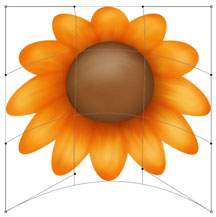First let me clarify the title of this editorial that states "not all art is licensable." I actually believe that it is possible for artists to license ANY art style and ANY theme. However, if the theme and art style does not appeal to the mass market,
* artists may be very limited in number of manufacturers that will license it. Manufacturers are looking for art to enhance their products so consumers will purchase them. Thus, the purpose of ART LICENSING IS TO SELL PRODUCTS to make money. And to make money, manufacturers need to sell their products to a lot of people.
*Note: The term mass market can refer to chain stores that focus on high sales at low prices such as Walmart. However, In this editorial I am using the term mass market to refer to a large market segment of the population as opposed to small specialized niche market segments.
I get many e-mails every month from artists who cannot understand why they are unable to license their art or get a licensing agent to represent them. Many have gone to art or design school and learned the techniques to create beautiful art and surface design. Some of them are successful in selling their art at street fairs, in art galleries, as illustrations for children books, or on products in print-on-demand internet websites such as Cafepress, Zazzle, and Etsy. But just because the art is beautiful and successful in these industries does not necessarily mean artists will be successful in licensing the art onto products to the mass market. This editorial discusses why artists have problems licensing their art despite it being well received in the industries mentioned above.
Selling art at street fairs, art galleries, children books, and print-on-demand websites are examples of niche (pronounced "nitch" or "neesh") markets. Niche markets are aimed at satisfying certain market needs such as specific consumer demographics, specific geographic areas, specific type of products, specific type of art, etc. There are some manufacturers that specialize in licensing art for particular niche markets but the majority produce products for the mass market. Thus, their products and the art they license MUST appeal to a broad spectrum of consumers.
Mass Market
Art licensed to the mass market is image-theme driven. Images and themes that appeal to a wide range of consumers are flowers, butterflies, cats, seashells and other coastal images, wine related images, roosters, cows and other farm images, Christmas trees, Santa, snowmen, etc. In other words, images that are seen everyday or during the holidays that evoke an emotional response (how beautiful, cute, funny, inspirational, etc.) are the most sought after art for products. Thus, art themes that are not in vogue or does not have central images that evoke an emotional response is unlikely to be licensed by most manufacturers. For instance, abstract art can be interesting and the colors beautiful but generally products with abstract designs does not appeal to a wide range of consumers. Thus, manufacturers putting abstract art on their products sell to a niche market such as the fabric and clothing industry. Likewise, a serene lake with snow-capped mountains in the background that is beautifully painted would have limited licensing potential; possibly a print or jigsaw puzzle manufacturer but few others. However, by painting a dock on the lake and possibly a person fishing off it in the foreground with only a hint of the mountains in the background appeals to more consumers and enhances the possibly of licensing the art.
Niche Markets
Niche markets are usually aimed at selling products to consumers interested in specific themes such as southwest and northwest Indian art, and western art. Even the art of famous fine art masters such as Monét, van Gogh, and Rembrandt is a niche market. Products with their art is sold mainly as art prints and in museum gift stores. Contemporary art sold at street fairs probably will have themes that are popular with local customers such as cows and roosters if located in a farming area, or grapes and vineyards if located in wine country. At the present, those themes just so happen to be popular for the mass market and thus could be licensed. However, also sold at street fairs may be paintings of local historical buildings or unusual animal breeds that are raised locally (i.e. llama). Those themes may be popular locally but will most likely not have a great enough appeal to the mass market to entice a manufacturer to license them.
Likewise, local landmark art displayed in galleries in popular tourist cities such as San Francisco and lodge art near Yellowstone National Park may be popular in those venues but not as prevalent elsewhere. Generally, art galleries are a niche market because they cater to customers who wish to purchase original paintings and can afford to do so. Gallery customers tend to seek specific artists, art themes, and styles of art that is not popular to the mass market.
Often, the art in children books are illustrations of children or animals doing some activity. Even if the illustrations are excellently rendered, they may not be licensable because individual illustrations supporting actions in a story most likely will not appeal to the mass market. For example, showing a dog running down the street or sitting in the bed of a pickup truck are not images a consumer will buy because they do not emote an emotional response without the story line. However, an image such as a cute little puppy tugging a long suffering older dog's ear appeals to consumers and could be licensed. Thus, book illustrators may or may not have the art suitable for licensing. However, some of the illustrations already created for books mostly likely could be adapted for licensing if the artist is willing to rework them.
Print-on-demand internet stores are ideal for consumers that want unique, specific themes, and personalized products. Some artists that paint specific themes not available in the mass market find this venue a viable way to sell their art. For instance, artists that paint a variety of dog breeds do well selling products with their art via internet stores but have a difficult time finding manufacturers willing to license them. The reason is that dog lovers are breed specific and are interested in only purchasing products with art of a particulate breed. Many artists offer all sorts of products on these websites with single icons (flowers, animals, geometric shapes, etc.) that can be personalized. This type of art may work well for a print-on-demand e-stores but is not normally wanted by manufacturers selling to the mass market.
Is your art licensable?
Of course, if you already have licensing deals and continue to get them, then you know that your art is licensable. If you are new to licensing and not yet been able to get contracts or find an agent to represent you, perhaps you are not painting themes that appeal to the mass market or not unique enough or your portfolio lacks diversity of themes. One way to find out is to get as many opinions as possible about your art from persons that are knowledgeable about art licensing and that are willing to give you a honest opinion. These could be artists that have licensed their art, licensing agents, licensing consultants,** and manufacturers. If you are serious in wanting to license your art DO NOT take the comments personally and negatively. Turn the knowledge you learn into positive ways to evolve your work so that you can license it. Read "
Don't give up Your Dreams and Grow a Thick Skin - Part 1."
** Read the article "On Art Licensing Coaches (consultants)."
Artists and agents recommend that you should paint the subjects that you love but if you are serious about licensing you may have to do some compromising. For example, if all you paint is realistic looking elephants and elephant themed art is not the trend you can wait until the trend comes around (it is bound to sooner or later) or add popular themes to your portfolio. Artists that are successful in licensing their art is constantly evolving their art. Read the following articles about evolving art by agent Suzanne Cruise: "
How to Keep Art Fresh & New: Continually Evolve Your Work - Part 1" and "
How to Keep Art & New: Reworking Old Art for Today's Greeting Card Market."
Check out these websites:
Look at the websites of the following artists that have successfully licensed their art. I purposely chose artists with different art styles to show that all kinds are licensable. Notice the kinds and variety of themes that they create.
coastal theme
artist Paul Brent
country
artist Susan Winget
fine
artist Alan Giana
whimsical
artist Robin Roderick
surface
designer Barb Tourtillotte
The information in this editorial is my opinion and NOT gospel. Get information from as many people as possible and use what works best for you!
Make sure that you read the comments to this editorial. Not everyone agrees with my opinions which is the reason why you need to get information from multiple people so that you can make informative decisions about your art career in licensing!
Comments are welcome. Please click on comments and write them in the comment window at the bottom.
 Either create a flower and leaf in PS or scan a painted one and place on a layer in PS. Hint: Read "Photoshop Tip: Easy to Create Motifs for Art Collections" to learn a great technique in creating different looking flowers from one flower petal.
Either create a flower and leaf in PS or scan a painted one and place on a layer in PS. Hint: Read "Photoshop Tip: Easy to Create Motifs for Art Collections" to learn a great technique in creating different looking flowers from one flower petal. 






















